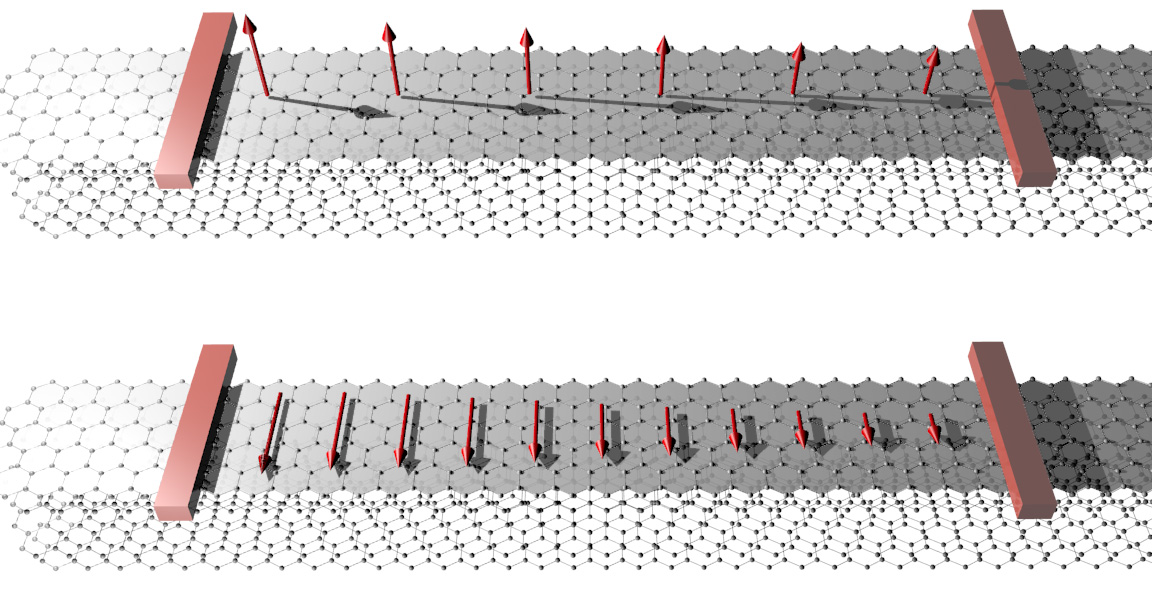Moore’s law predicts (Moore 1965) that informatics devices should soon reach the limit where device speed can no longer be improved using conventional electronics. This has motivated the quest towards novel architectures, which include quantum computers, so-called neuromorphic computing (which essentially mimics the function of the human brain) and spintronics. The latter phrase is a merger of „spin” and the „electronics” associated „tronics” (S. A. Wolf et al. Science 16, 294 (2001).).
Spintronics is based on the concept of using the eigen-angular momentum or spin of electrons as information carrier unit. The field has been active since the early 2000s and the 2007 Nobel Prize in Physics was awarded for spintronics related research to Albert Fert and Peter Grünberg. Concurrent HDD head readers employ a spintronics based technology as well as random access memories (RAM), based on such principles, has been produced in prototype form. Electron spins interact with the environment through relativistic interactions thus their coherence is preserved much longer than their collective motion (the electric current). The major governing factor in spintronics is the spin-coherence time. Its length determines whether a material can be used for spintronics. Ezen az ún. spin-relaxációs időn múlik, hogy egy adott anyag alkalmas-e ilyen célra vagy sem. The researchers of the Wigner RCP, in close collaboration with the researchers of the Budapest University of Technology and Economics along with an international collaboration, observed that the spin-relaxation time in graphite is an order of magnitude longer than that observed in any other materials.
Graphite is a common material, which is known since ancient times. It is used for several purposes including writing, as a lubricant and polishing material, in material sciences, energy storage, or even in nuclear technologies. Interest in graphite was revitalized by the discovery of a single graphite layer, graphene, in 2004. The latter material has been proposed for spintronics purposes but its spin-relaxation lifetime was limited to a few nanoseconds and it had to be cooled to liquid helium temperatures (4 K) for its observation. The results reviewed herein found spin-relaxation lifetime in graphite around 100 ns at room temperature. Although it may not appear to be very long, it is still sufficient for the spintronics applications.
The researchers of the Eötvös Loránd Research Network Wigner RCP, Budapest University of Technology and Economics, École Polytechnique Fédérale de Lausanne (Switzerland), a University of Notre Dame (USA), University of Regensburg, and the Pavol Jozef Šafárik University (Slovakia) have shown that experiments in graphite has been misinterpreted in the past 80 years and the theoretical description lacked the interpretation of a symmetry present in graphite which results in the ultralong relaxtion lifetimes.
Availability of the publication:
Ultralong 100 ns spin relaxation time in graphite at room temperature
Bence G. Márkus, Martin Gmitra, Balázs Dóra, Gábor Csősz, Titusz Fehér, Péter Szirmai, Bálint Náfrádi, Viktor Zólyomi, László Forró, Jaroslav Fabian és Ferenc Simon
https://www.nature.com/articles/s41467-023-38288-w




